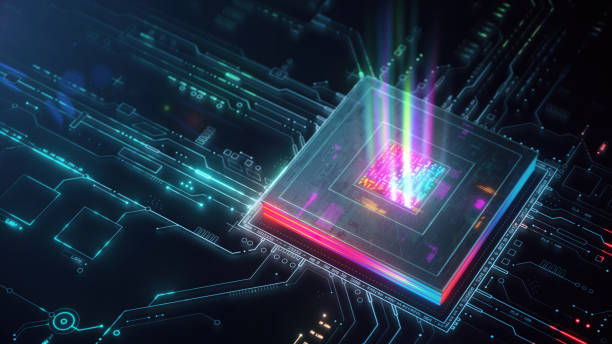Global technology trends as of 2021 included the quick development and uptake of artificial intelligence, 5G networks, the Internet of Things (IoT), blockchain, cybersecurity, renewable energy, and data privacy issues across numerous industries globally.
Here are the top 10 global technology trends to watch out for
Table of Contents
Artificial Intelligence (AI) and Machine Learning (ML):
AI and ML continue to advance and find applications in various industries, such as healthcare, finance, transportation, and customer service.

Top 10 global technology trends; AI and ML
Here are some notable trends in AI and ML:
- Deep Learning: Deep learning, a subsection of ML, focuses on neural networks with multiple layers that can automatically learn and extract complex patterns from huge amounts of data. It has been instrumental in advancements such as image and speech recognition, natural language processing, and autonomous vehicles.
- Explainable AI: As AI systems become more sophisticated, there is a growing need to understand and interpret their decision-making processes. Explainable AI aims to provide transparency and explain-ability, allowing users to comprehend the reasoning behind AI-based decisions and predictions.
Reinforcement Learning:
Reinforcement learning involves training AI models through interactions with an environment, where the models learn to make decisions and improve performance based on feedback. This approach has led to significant breakthroughs in areas like game playing, robotics, and autonomous systems.
AI at the Edge:
Edge computing, combined with AI capabilities, enables data processing and analysis closer to the source, reducing latency and improving real-time decision-making. This trend allows AI models to run directly on devices like smartphones, sensors, and IoT devices, unlocking new possibilities for real-time applications.
AI in Healthcare:
AI and ML are transforming the healthcare industry by enabling faster and more accurate diagnoses, personalized treatments, and predictive analytics. AI-powered systems can analyze medical images, assist in drug discovery, and improve patient outcomes by identifying patterns and providing data-driven insights.
Natural Language Processing (NLP):
NLP focuses on enabling computers to understand and process human language. Significant advancements in NLP have led to the development of virtual assistants, chatbots, and language translation systems, improving communication and user experiences.
Federated Learning:
Federated learning allows AI models to be trained on decentralized data sources without directly transferring sensitive information to a central server. This approach enhances privacy and security while enabling collaborative learning from diverse datasets, which is especially valuable in industries like healthcare and finance.
AI Ethics and Responsible AI:
As AI becomes more pervasive, there is increasing emphasis on ethical considerations and responsible use. Efforts are being made to address bias, fairness, transparency, and accountability in AI systems to ensure they align with societal values and adhere to ethical standards.
Ix, AI in Automation and Robotics:
AI and ML are transforming automation and robotics by enabling machines to learn and adapt to dynamic environments. From industrial robots to autonomous vehicles and drones, AI-powered automation is enhancing efficiency, productivity, and safety in various industries.
AI in Finance:
The financial sector is leveraging AI and ML technology for customer service, algorithmic trading, fraud detection, risk assessment, and personalized financial advice. These programs strengthen security, boost productivity, and give users greater information for making decisions.
These trends show how AI and ML technologies are developing and might have an impact on several industries, changing how firms run and opening up new possibilities for innovation and growth.
Internet of Things (IoT):
The IoT is expanding rapidly, connecting various devices and enabling communication between them. With the advent of 5G technology, IoT adoption is set to grow, leading to more connected smart homes, cities, and industries.
Edge Computing:
Edge computing is becoming increasingly significant as more IoT devices create more data. It includes processing data more quickly and efficiently by doing it near to the source. For real-time applications like driverless vehicles, smart grids, and remote healthcare, edge computing is essential.
Due to the demand for real-time processing, decreased latency, and increased bandwidth utilization, edge computing is being rapidly adopted across a variety of industries. Edge computing supports vital applications, speeds up decision-making, and lessens reliance on cloud connectivity.
Artificial intelligence (AI) and edge computing are being combined to bring intelligence and decision-making capabilities closer to the edge devices. With less reliance on cloud-based AI processing, this approach enables real-time AI-powered applications like object detection, video analytics, and predictive maintenance.
EaaS models are also becoming more popular, providing organizations with resources and services for edge computing. Due to this trend, companies can utilize edge infrastructure without spending money on specialized gear and software. EaaS providers streamline deployment and enable scalability by managing and optimizing the edge computing environment. Additionally, there is a continuing trend in the creation of industry standards for edge computing. The goal of standardization initiatives is to provide security, compatibility, and interoperability for a range of edge computing platforms, applications, and hardware. These standards encourage the wide adoption of edge computing systems and enable seamless integration.
These patterns show how crucial edge computing is becoming for enabling real-time applications, fostering the development of new technologies, and overcoming the difficulties connectedness, latency, and data volume present in the current digital environment.
5G Technology:
The introduction of 5G networks, which provide faster speeds, lower latency, and higher capacity, is revolutionizing communication. This technology will open the door for developments like self-driving cars, remote medical procedures, augmented reality, and smart cities. Globally, 5G networks are being set up, and coverage is growing in many areas. More nations are deploying 5G infrastructure, expanding the market for 5G connection among consumers and enterprises.
Healthcare, manufacturing, transportation, and entertainment are just a few of the sectors undergoing change thanks to 5G. It makes it possible for sophisticated robots and automation in manufacturing, linked and autonomous cars in transportation, remote monitoring and diagnostics in healthcare, high-quality streaming and interactive content experiences in entertainment.
Extended Reality (XR):
XR encompasses virtual reality (VR), augmented reality (AR), and mixed reality (MR). These technologies are becoming more accessible and are being used in gaming, education, healthcare, and training. Expect advancements in XR hardware, software, and content creation.
Cybersecurity:
Because of our growing reliance on technology, cybersecurity is an important issue. Be prepared for the development of increasingly advanced cybersecurity solutions, such as biometric authentication techniques, blockchain-based security, and threat detection powered by AI.
Quantum Computing:
Complex issues that are beyond the capabilities of conventional computers could potentially be solved by quantum computing. The development of quantum computers is still in its early phases, although innovations in fields like optimization algorithms, drug discovery, and cryptography are anticipated.

Top 10 global technology trends; quantum computing
Recent advances in quantum computing have pushed the limits of conventional computing and opened up a world of possibilities for the solution of challenging issues. The dependability and scalability of quantum systems have been improved through advancements in quantum hardware, such as the creation of qubits with longer coherence durations and increased stability. Researchers have made strides in quantum algorithms, showcasing the benefit of quantum computers in fields including molecular simulation, optimization, and cryptography.
Quantum computing has attracted significant investment from leading technological businesses and academic organizations, generating a dynamic ecosystem of innovation. The development of quantum computing points to a promising future where quantum systems can solve issues that are currently insurmountable for classical computers, revolutionizing fields like drug discovery, materials science, and optimization. Despite the challenges that still need to be overcome, such as improving qubit quality and error correction.
Automation and Robotics:
Industries are changing as a result of increased productivity and automation. Manufacturing, logistics, healthcare, and other industries will continue to change as a result of developments in robotics, robotic process automation (RPA), and autonomous systems.
Robotics and automation have made incredible strides forward, revolutionizing entire industries and changing how we work. With the incorporation of artificial intelligence, machine learning, and cutting-edge sensors, automation technologies have advanced. This has increased productivity, efficiency, and accuracy in a variety of industries, including manufacturing, logistics, healthcare, and finance. Robotics has made major advancements in dexterity, movement, and interface with humans, allowing them to carry out difficult jobs in a variety of settings.
Cobots, or collaborative robots, have gained popularity because they can work alongside people while increasing efficiency and safety. The emergence of drones and driverless vehicles has completely changed logistics and transportation. Additionally, improvements in robot perception and control systems have broadened the range of possible applications, including medical procedures, farming, and space travel. Innovation is being fueled by the advancements in automation and robotics, which are transforming sectors and laying the foundation for a day when intelligent automation and human-robot collaboration are the norm.
Sustainable Technology:
Sustainability is becoming more of a priority, spurring advancements in green practises, energy-efficient technologies, and renewable energy sources.With the help of sustainable technology, improvements in waste management, energy efficiency, and renewable energy have all been made. The use of sustainable energy sources has increased as a result of advances in solar and wind energy, battery storage, and smart grid technology. Furthermore, improvements in recycling, circular economy principles, and sustainable materials are supporting eco-friendly solutions for a more sustainable future. Expect advancements in renewable energy sources including solar and wind, electric vehicles, and sustainable materials.
Blockchain Technology:
Blockchain is important in sectors including finance, supply chain management, and healthcare because it allows secure, decentralized, and transparent transactions. Blockchain technology has developed and advanced, providing decentralized, transparent, and safe solutions. Applications in finance, supply chain, and governance have grown, improving accountability, effectiveness, and trust across a range of industries. Expect blockchain to continue to be adopted and developed, including scalability upgrades and interoperability between various blockchain networks.
It’s worthy to note that technological trends can change quickly, and new advancements might appear that aren’t covered by this list.


